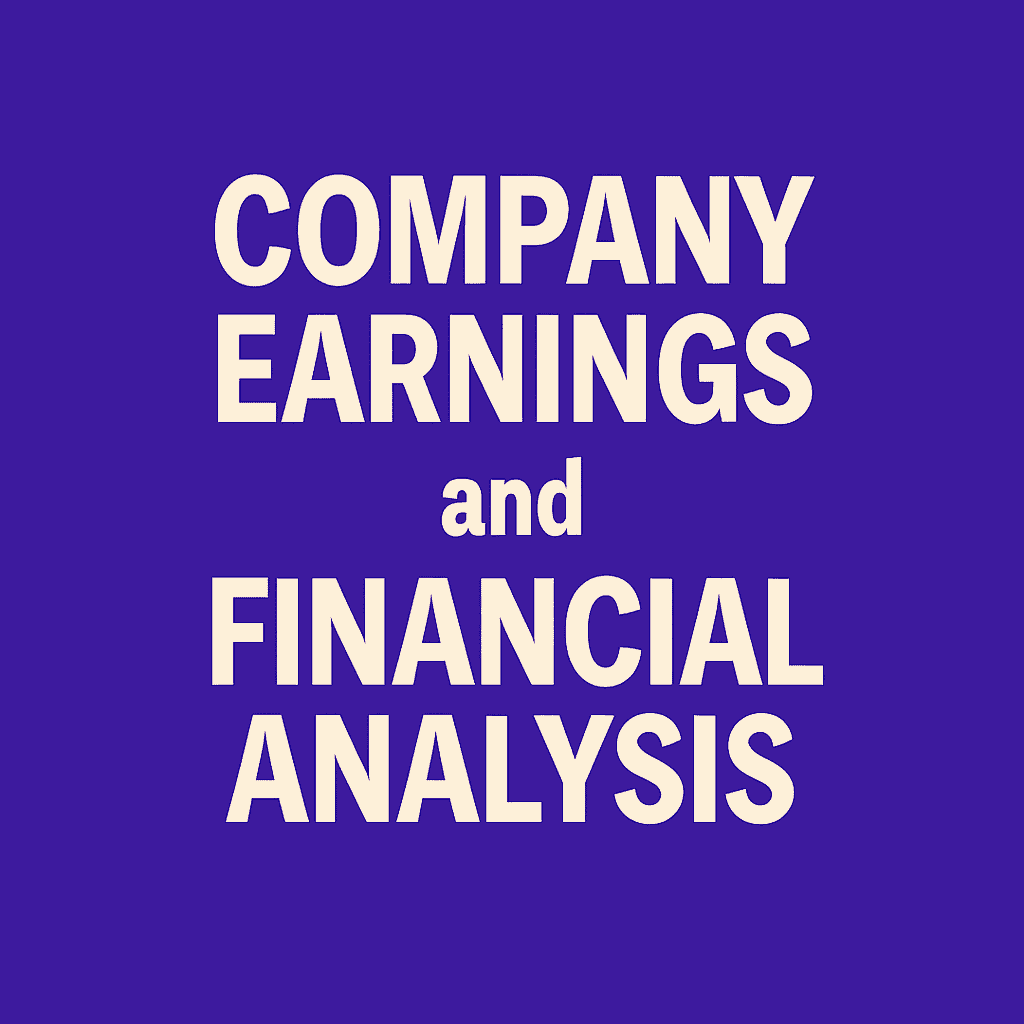Broadcom Inc. (NASDAQ: AVGO)
Q1 Fiscal Year 2025 Financial Analysis | March 6, 2025
Executive Summary
Broadcom delivered exceptional Q1 FY2025 results, reporting record revenue of $14.9 billion, up 25% year-over-year, driven by strong performance in both AI semiconductor solutions and infrastructure software. The company achieved $10.1 billion in Adjusted EBITDA (68% margin) and generated robust free cash flow of $6.0 billion (40% of revenue). AI revenue grew an impressive 77% year-over-year to $4.1 billion, while infrastructure software revenue increased 47% to $6.7 billion, demonstrating the company's successful strategic positioning in high-growth technology markets.
Q1 FY2025 Highlights
Financial Performance
Broadcom's Q1 FY2025 performance was outstanding, with record revenue of $14.9 billion representing 25% year-over-year growth. This exceptional growth was driven by the company's strategic positioning in artificial intelligence and enterprise software markets, which continue to experience robust demand from hyperscale customers and enterprise clients.
GAAP net income surged to $5.5 billion, a remarkable 315% increase from $1.3 billion in the prior year. Non-GAAP net income was $7.8 billion, up 49% year-over-year, demonstrating strong operational performance. The significant improvement in GAAP profitability reflects both revenue growth and operational leverage, as well as lower restructuring charges compared to the prior year period.
Adjusted EBITDA reached $10.1 billion with a margin of 68%, compared to $7.2 billion (60% margin) in Q1 FY2024. This 800 basis point margin expansion demonstrates the company's ability to scale operations efficiently and the inherent profitability of its AI and infrastructure software businesses.
Free cash flow generation remained robust at $6.0 billion, representing 40% of revenue. This was an increase of 28% from $4.7 billion in the prior year, highlighting the cash-generative nature of Broadcom's business model. The company's capital-light model, with only $100 million in capital expenditures, allows it to convert a high percentage of earnings into free cash flow.
Non-GAAP diluted earnings per share increased 45% to $1.60, benefiting from both higher earnings and a reduced share count due to ongoing share repurchase activities. The company eliminated 8.7 million shares during the quarter through net settled equity awards, contributing to EPS growth.
Segment Performance
| Segment | Revenue ($B) | % of Total | YoY Change | Key Drivers |
|---|---|---|---|---|
| Semiconductor Solutions | $8.2 | 55% | +11% | AI XPUs, connectivity solutions for AI data centers |
| Infrastructure Software | $6.7 | 45% | +47% | VMware acquisition, enterprise software demand |
Semiconductor Solutions generated revenue of $8.2 billion, representing 55% of total revenue and 11% year-over-year growth. This growth was primarily driven by AI semiconductor solutions, where hyperscale customers continued their significant investments in AI infrastructure. The segment benefited from strong demand for AI XPUs (accelerated processing units) and connectivity solutions specifically designed for AI data centers.
Within the semiconductor segment, AI revenue was the standout performer, growing 77% year-over-year to $4.1 billion. This represents approximately 50% of total semiconductor revenue and 27% of Broadcom's overall revenue. The company's AI solutions include custom ASICs for major hyperscale customers, networking chips for AI clusters, and high-speed connectivity products that enable efficient data transfer in AI computing environments.
Infrastructure Software delivered exceptional performance with revenue of $6.7 billion, up 47% year-over-year, representing 45% of total company revenue. This significant growth was driven by the successful integration of VMware, which was acquired in late 2023. VMware's virtualization and cloud infrastructure software solutions have shown strong demand from enterprise customers looking to modernize their IT infrastructure.
The infrastructure software business continues to demonstrate the value of Broadcom's software strategy, providing recurring revenue streams with high margins. The segment includes mainframe software, enterprise security solutions, and the VMware portfolio, all of which serve critical enterprise needs and tend to have high customer retention rates.
Looking ahead to Q2 FY2025, management expects AI semiconductor revenue to continue its strong momentum, with guidance of approximately $4.4 billion in AI revenue, representing sequential growth from Q1's $4.1 billion. This continued strength reflects ongoing investments by hyperscale partners in AI infrastructure and Broadcom's strong competitive position in this market.
AI Market Leadership & Technology Innovation
Broadcom has established itself as a critical enabler of the AI revolution, with its semiconductor solutions powering the infrastructure that supports large-scale AI computing:
AI Semiconductor Portfolio
- Custom ASICs: Broadcom designs and manufactures custom silicon solutions for leading hyperscale customers, including specialized chips for AI training and inference workloads
- Networking Solutions: High-performance switches and network interface cards that enable efficient communication between AI accelerators in data centers
- Connectivity Products: Advanced interconnect solutions that provide the high-bandwidth, low-latency connections required for AI cluster computing
- Optical Components: Fiber optic transceivers and components that support long-distance, high-speed data transmission in AI infrastructure
The company's AI revenue growth of 77% year-over-year demonstrates the strategic value of its technology portfolio. Broadcom's solutions are designed to address the unique requirements of AI workloads, including the need for massive parallel processing, high memory bandwidth, and efficient data movement between computing elements.
CEO Hock Tan noted that "hyperscale partners continue to invest in AI XPUs and connectivity solutions for AI data centers," indicating sustained demand for Broadcom's AI-enabling technologies. The company's close partnerships with major cloud service providers position it well to capture the ongoing expansion of AI infrastructure.
The sequential guidance for Q2 AI revenue of $4.4 billion, up from $4.1 billion in Q1, suggests that AI infrastructure buildout is accelerating rather than slowing down. This trend reflects the increasing deployment of AI applications across various industries and the growing computational requirements of advanced AI models.
Infrastructure Software Expansion
Broadcom's infrastructure software segment has become a significant growth driver, particularly following the VMware acquisition, and represents a strategic shift toward higher-margin, recurring revenue businesses:
Software Portfolio Components
- VMware Solutions: Virtualization, cloud infrastructure, and digital workspace technologies that help enterprises modernize their IT environments
- Mainframe Software: Critical software solutions for mainframe computing environments, serving large enterprises and government organizations
- Enterprise Security: Cybersecurity solutions that protect enterprise networks and applications from various threats
- Storage Software: Data management and storage solutions that help organizations manage their growing data requirements
The 47% year-over-year growth in infrastructure software revenue to $6.7 billion demonstrates the successful integration of VMware and the strong demand for enterprise software solutions. This growth rate significantly exceeds the overall enterprise software market growth, indicating that Broadcom is gaining market share through its comprehensive portfolio.
The infrastructure software business model provides several advantages, including predictable subscription and maintenance revenue streams, high customer switching costs, and strong margins. Many of Broadcom's software solutions are mission-critical for enterprise operations, leading to high customer retention rates and providing opportunities for cross-selling additional solutions.
VMware's position in the hybrid cloud and virtualization markets is particularly valuable as enterprises continue their digital transformation initiatives. The company's software solutions enable organizations to modernize their infrastructure while maintaining compatibility with existing systems, making them attractive to large enterprises with complex IT environments.
Looking forward, the infrastructure software segment is expected to benefit from continued enterprise investments in digital transformation, cloud migration, and cybersecurity. The recurring nature of much of this revenue provides stability and predictability to Broadcom's overall financial performance.
Financial Position & Capital Allocation
Broadcom maintains a strong financial position with substantial cash generation capabilities and a disciplined approach to capital allocation:
Balance Sheet Strength
- Cash Position: $9.3 billion in cash and cash equivalents, providing financial flexibility for strategic investments and shareholder returns
- Debt Management: Total debt of $66.6 billion, with $5.7 billion classified as short-term debt, managed through active refinancing activities
- Working Capital: Strong working capital position with trade receivables of $5.0 billion and inventory of $1.9 billion
- Shareholder Equity: $69.8 billion in stockholders' equity, representing a strong balance sheet foundation
The company's free cash flow of $6.0 billion in Q1 FY2025 represents a 40% conversion rate from revenue, demonstrating the highly cash-generative nature of Broadcom's business model. This strong cash flow generation provides significant flexibility for capital allocation across growth investments, acquisitions, and shareholder returns.
During Q1, Broadcom returned capital to shareholders through dividends, paying $2.8 billion in quarterly dividends at $0.59 per share. The company also eliminated 8.7 million shares through tax withholdings on equity award vestings, effectively reducing the share count and contributing to earnings per share growth.
Capital Allocation Priorities
- Maintaining dividend payments to provide consistent returns to shareholders
- Investing in research and development to maintain technology leadership
- Strategic acquisitions that expand capabilities or market reach
- Debt management and optimization of capital structure
The company's quarterly dividend of $0.59 per share demonstrates management's confidence in sustained cash flow generation and commitment to returning capital to shareholders. With a strong balance sheet and robust cash flow, Broadcom is well-positioned to continue its dividend policy while investing in growth opportunities.
Q2 FY2025 Outlook
Broadcom provided positive guidance for the second quarter of fiscal year 2025, indicating continued strength across its business segments:
- Revenue guidance of approximately $14.9 billion, representing 19% year-over-year growth
- Adjusted EBITDA margin guidance of approximately 66% of projected revenue
- AI semiconductor revenue expected to reach $4.4 billion in Q2, up from $4.1 billion in Q1
- Continued strength expected in infrastructure software business
The Q2 revenue guidance of $14.9 billion, while essentially flat sequentially, represents solid year-over-year growth of 19% compared to Q2 FY2024. This guidance reflects the continued strength in AI semiconductor demand and steady performance in the infrastructure software segment.
The sequential increase in AI revenue guidance to $4.4 billion from $4.1 billion in Q1 indicates that hyperscale customers continue to invest heavily in AI infrastructure. This trend suggests that the AI buildout cycle is still in its early stages, with significant runway for continued growth.
The Adjusted EBITDA margin guidance of approximately 66% remains at exceptionally high levels, though slightly below Q1's 68% margin. This guidance reflects the company's ability to maintain strong profitability while continuing to invest in research and development and growth initiatives.
Management's confidence in the outlook is supported by the visibility provided by their semiconductor design wins and the recurring nature of their software revenue streams. The combination of strong customer relationships and mission-critical products provides good predictability for near-term performance.
Risks & Opportunities
Opportunities
Risks
Conclusion
Strengths
- Record revenue growth of 25% driven by AI and software segments
- Exceptional profitability with 68% Adjusted EBITDA margin
- Strong cash flow generation ($6.0B free cash flow)
- Leadership position in high-growth AI semiconductor market
- Successful VMware integration driving software growth
Areas to Monitor
- Sustainability of AI infrastructure investment cycle
- Competition in semiconductor and software markets
- Debt levels and capital structure optimization
- Execution of VMware integration and synergies
- Regulatory environment for technology acquisitions
Summary
Broadcom delivered outstanding Q1 FY2025 results with record revenue of $14.9 billion, up 25% year-over-year, driven by exceptional growth in AI semiconductors (77% YoY) and infrastructure software (47% YoY). The company achieved remarkable profitability with Adjusted EBITDA of $10.1 billion and a 68% margin, while generating strong free cash flow of $6.0 billion.
The company's strategic positioning in AI infrastructure and enterprise software markets continues to drive exceptional performance. With AI revenue reaching $4.1 billion in Q1 and expected to grow to $4.4 billion in Q2, Broadcom is well-positioned to capitalize on the ongoing AI infrastructure buildout by hyperscale customers.
The successful integration of VMware has significantly expanded Broadcom's software capabilities, creating a more balanced and recurring revenue base. The infrastructure software segment's 47% growth demonstrates the value of this strategic direction and provides a foundation for continued expansion.
Looking ahead, Broadcom's guidance for Q2 FY2025 reflects continued strength across both segments, with revenue expected to reach $14.9 billion and maintain strong profitability. The company's strong financial position, market-leading technologies, and strategic focus on high-growth markets position it well for sustained long-term performance in the evolving technology landscape.




